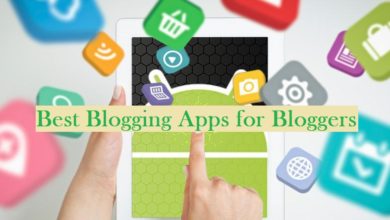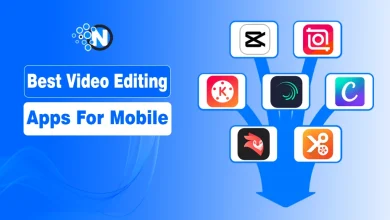Not Just an App: Potential for Building a Brand Around App

An app’s identity directly relates to its reputation and users’ perception. As its developers, you shape these beliefs from the first development moments. User experience (UX) decisions form first impressions, but your app is more than just buttons and a service.
The different marketing efforts devise a targeted outlook on the application. For instance, a big part of Duolingo’s success is its playful narrative and functional decisions that help it stand out.
In this blog post, I will explore how you can build a brand for your app, making it more desirable in the market.
Let’s begin!
Transforming an App into a Brand
An app’s brand is all about how it is perceived and judged, what it delivers (like features), its mission, and its presentation. So, it’s about how apps function and what other elements reinforce their position in the market. Clever UX decisions, colors, emotional goals, and user communication can boost these functions.
After an app triggers certain emotions in a user, and they no longer choose it mainly for its functionality but because they genuinely enjoy or like it, it becomes a brand.

When to Start Thinking About an App’s Identity?
Many businesses consider brand-building an essential step, which often occurs organically, with a few strategic pushes in the right direction. However, application developers likely believe features and impressive functionality speak louder than other, more visual, aspects.
The image around your app’s identity should be shaped long before its final release date. A strong brand builds trust and recognizability and catches and holds users’ attention.
Typically, an app’s brand consists of the following components:
- Visual aesthetics and style are directly related to how your application looks. The proper color selection pleases users and does not disturb their experience. However, designers should be aware of the psychological effect colors have. For example, green or blue are standard colors for wellness apps due to their calming and trusting feel.
- User experience decisions can motivate (or discourage) users to keep using your application. However, using inconsistent designs, dark patterns, unclear navigation, or overcomplicated user journeys might hurt your reputation.
- Your offer/promise to your users is crucial since it’s likely the initial reason they joined. Failing to keep your word hurts your brand, especially if your widespread messages are misleading or have a double meaning.
- Your persona/image is the representation you create online. It happens everywhere: in app stores, social media, and your official website.
- Communicating with your users can support your brand if you respond to queries promptly and dedicate time to resources like FAQs.
- Consistent representation means everything related to your applications follows the preferred tone and style. To make this task easier and ensure a unified front, develop a brand style guide and use it as a reference. The guide includes typography, tone of voice, brand colors, logos, screenshots (of the app interface), and other helpful illustrations.
Aiming for Real Connections and Delivering Top-Notch Functionality
Of course, no branding efforts will replace functionalities that users expect to receive. Development is likely your highest priority, and it should be (to a degree). However, don’t forget the many options for delivering quality code without labouring away for weeks or months.
Use app development frameworks (React Native, Flutter) for reusable code and an SDK to add necessary but standard functionalities. SDKs can help with user authentication/login, in-app payments, live chats, analytics, and monetization. The latter refers to how you plan to make money with your app (ads, unused internet bandwidth, or subscriptions).
As a result, you’ll have more time to polish your brand and leave an impression on potential users.
How to Develop an App Branding Strategy
First of all, we recommend answering the following questions. Their answers directly affect your branding strategy:
What is your target audience?
Millions of mobile users can be your potential users! Realistically identifying your intended audience requires two things: a deep understanding of your product and thorough research of your competitors. The targeted user profiles should include age, gender, interests, hobbies, education, location, and other factors.
What is your selling point?
Your USP likely stems from the functionalities offered, which are unique compared to those of your competitors. For example, say your application helps users find venues for their celebrations. Besides integrating the most common features, consider what’s missing. Can adding a booking feature or immediate price estimation make your application more appealing?
What thoughts and emotions should users have after hearing your app’s name?
Developing trust is the same for all apps. Thus, dig deeper when answering this question. You should be a problem-solver, meaning your app stands out in how it performs. Besides functionality, consider what lifestyles, values, or goals you wish to associate with.
The Power of Social Media for App Branding
You can achieve only so much through ads, app design, unique logos, witty push notifications, and clean user journeys. Social media has become the perfect ecosystem for shaping your app’s brand and identity. However, it’s crucial to establish what you want to post there:
- Video tutorials are helpful, but dry and technical approaches won’t always work here. For example, Notion introduces real-life stories from their clients in their YouTube videos, allowing clients to learn from their experiences.
- Bumble creates different content, and one intriguing aspect of its identity is its collaboration with celebrities, sharing about relationships and dating. On TikTok, the brand posts casual videos on single life, best date spots, etc.
- Duolingo is one of the most notable examples of ridiculously successful branding. Its playful mascot and overall approach to learning transform a frequently tedious activity into a fun game! Moreover, its social media posts only reinforce this approach.
Conclusion
Don’t treat your application as a set of buttons and functionalities. Instead, view it as a brand and establish your message or vision early. For some, this might relate to professionalism, digging deeper into social issues, supporting charities, and sharing values with customers. In other cases, a brand can be focused on innovative problem-solving. Of course, artificially pushing an identity or brand won’t do: if you aim to showcase your app as youthful, friendly, and convenient, you’d better have the necessities to back it up.




